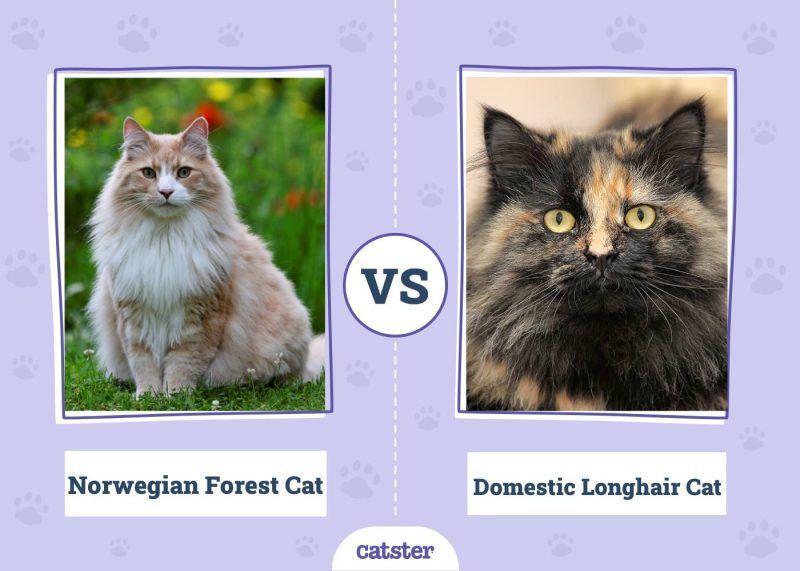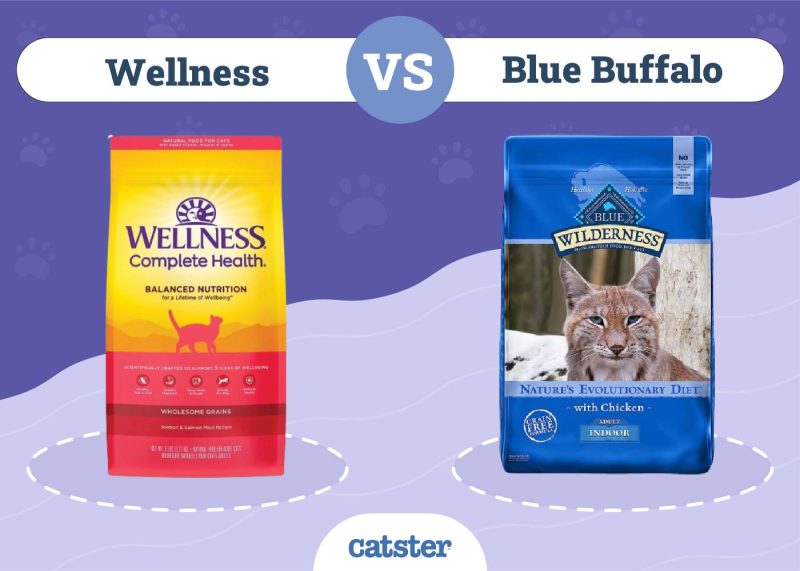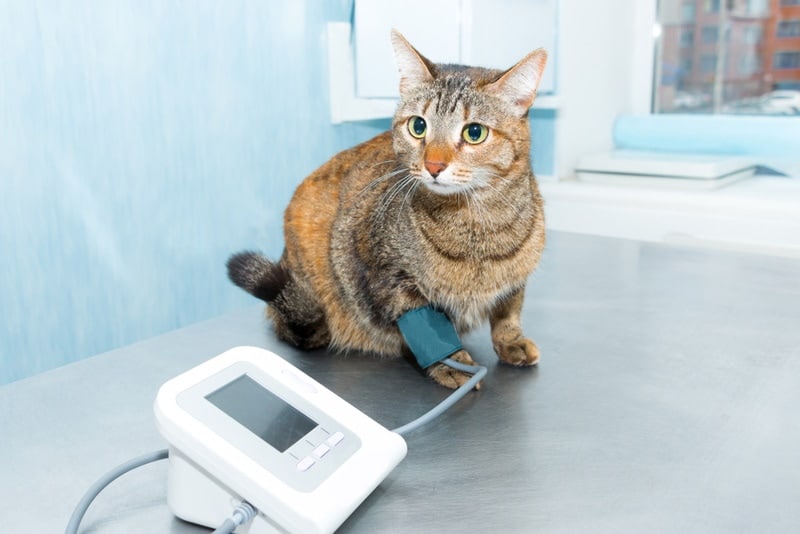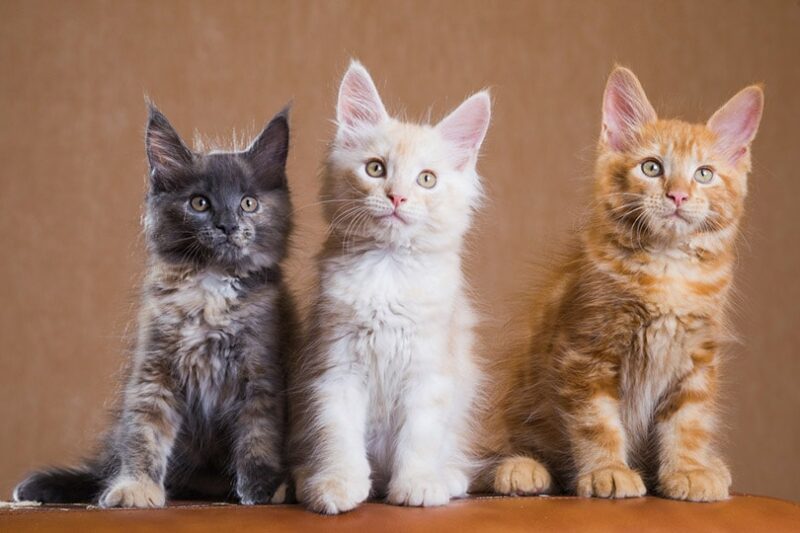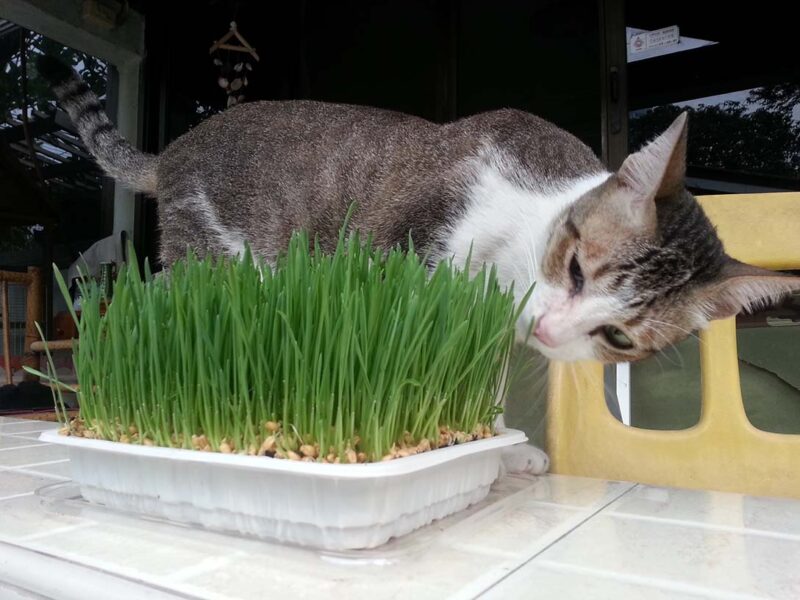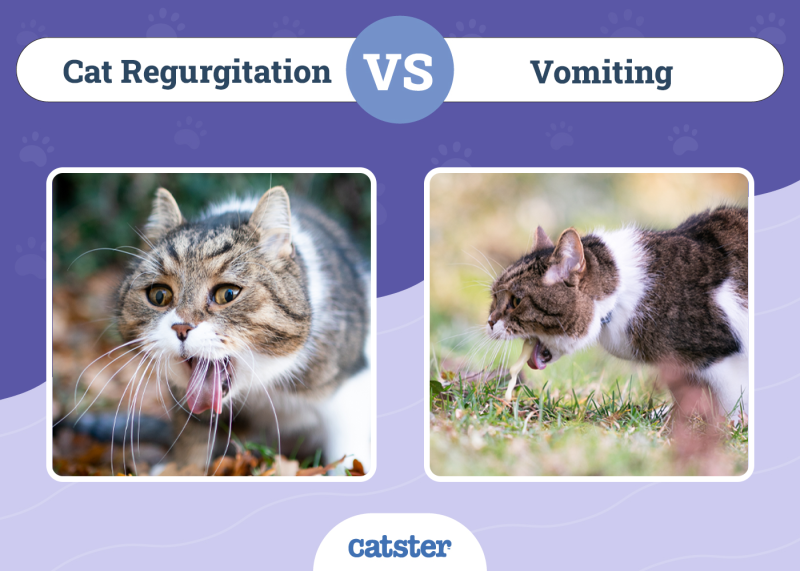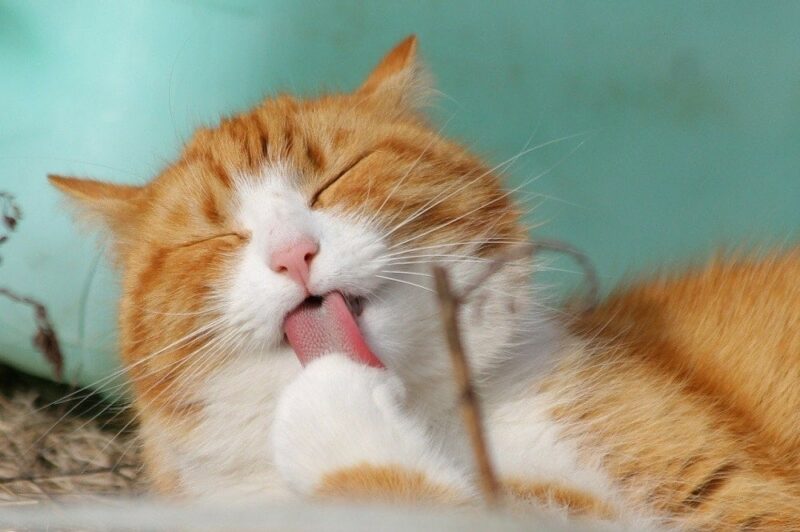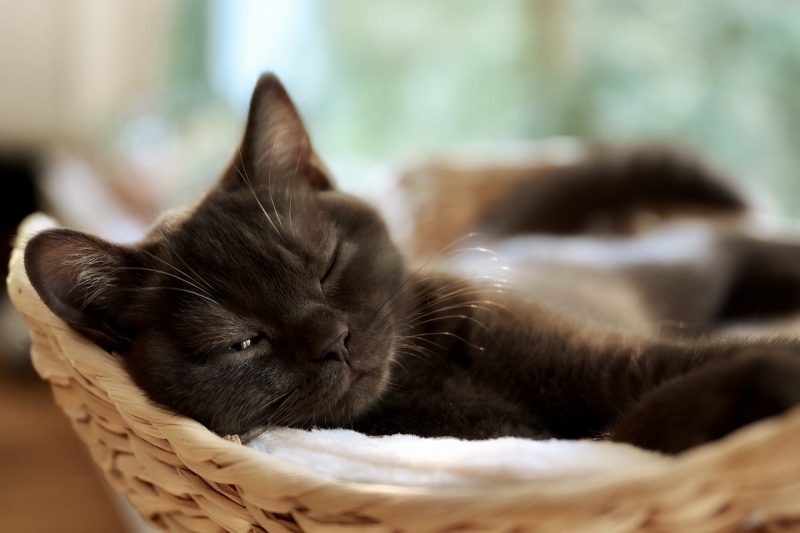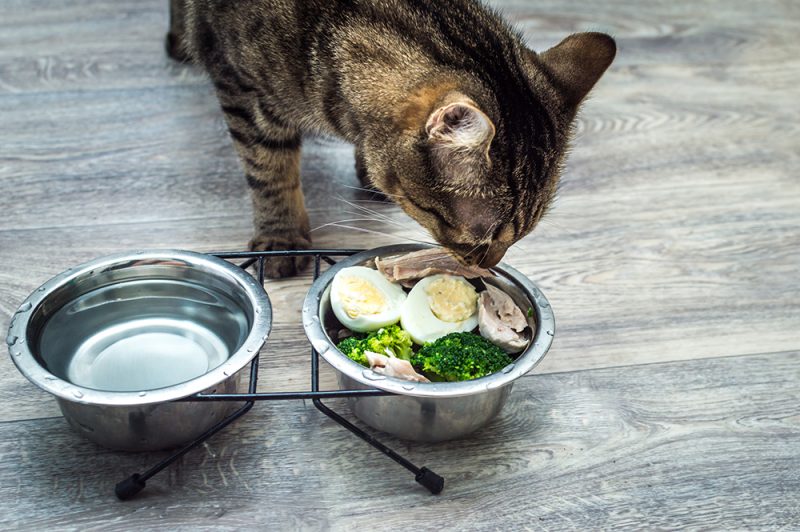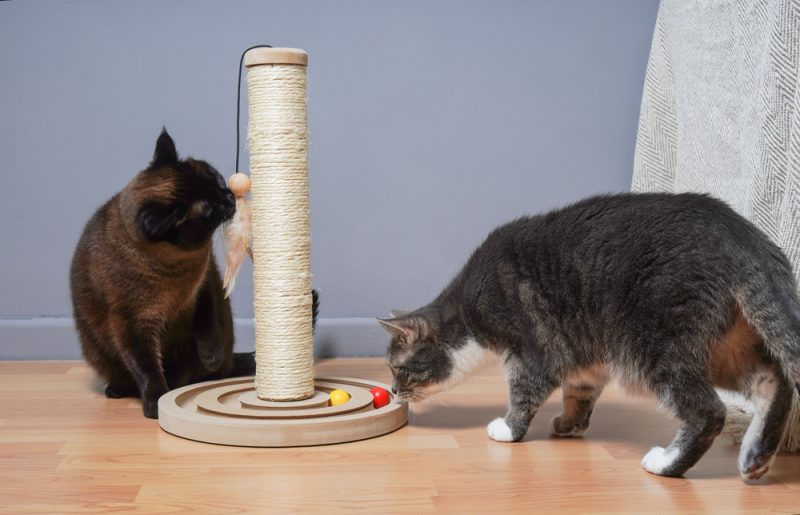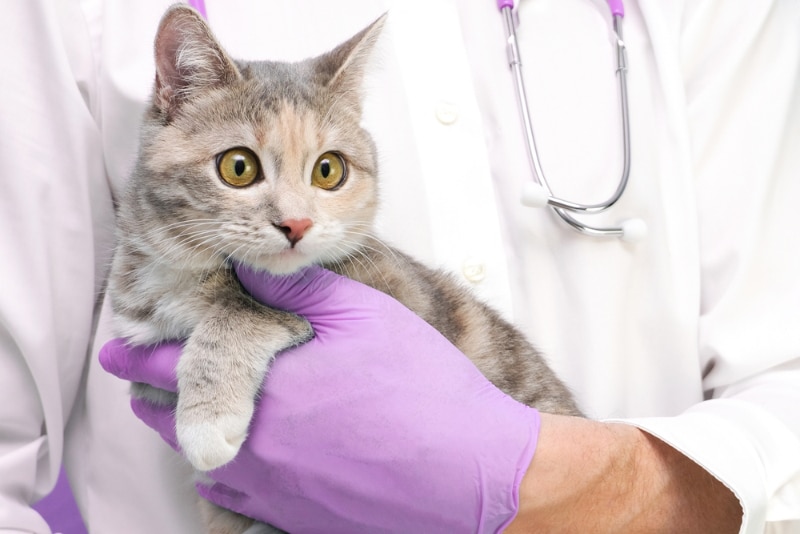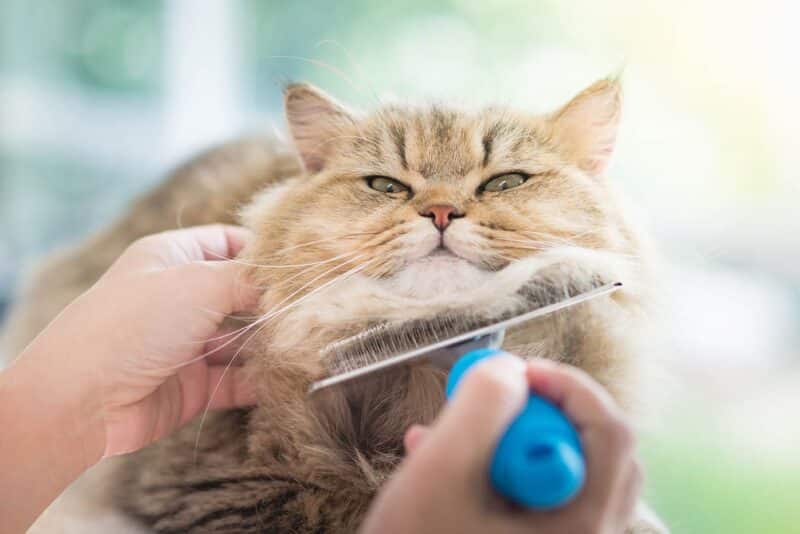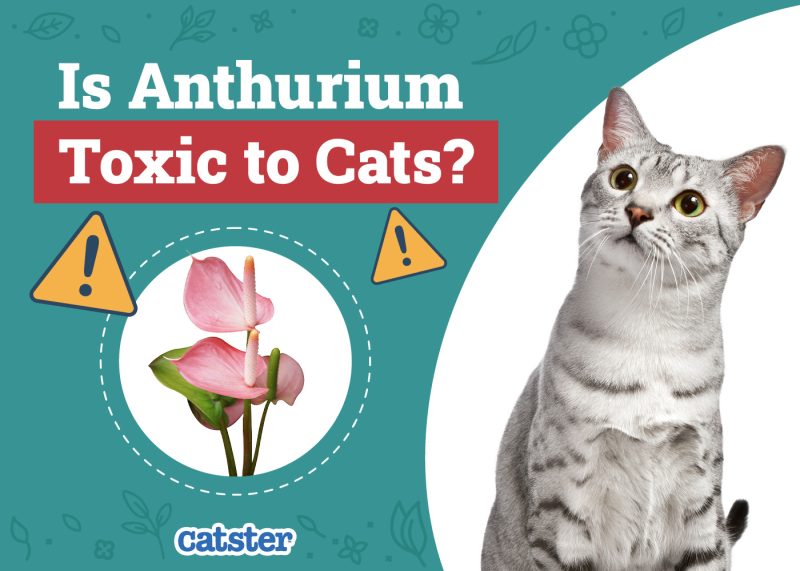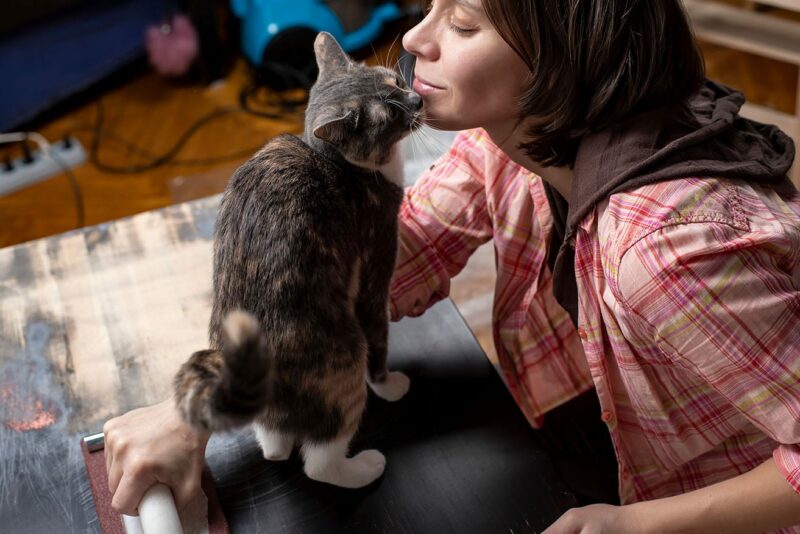In this article
There are few cats more striking in appearance than the Norwegian Forest Cat. It’s hard to match the Forest Cat’s imposing build and glossy, water-resistant fur. However, one cat that can often be mistaken for the Norwegian Forest Cat is the Domestic Longhair Cat.
While the Domestic Longhair Cat is not an actual “breed,” it is a term for cats of mixed or ambiguous ancestry that present the recessive gene for fur between the lengths of 2 and 6 inches. They can be mistaken for other more defined breeds of cats with similar appearances by unscrupulous individuals.
Here are the details on the differences between Norwegian Forest Cats and Domestic Longhair Cats.

Visual Differences
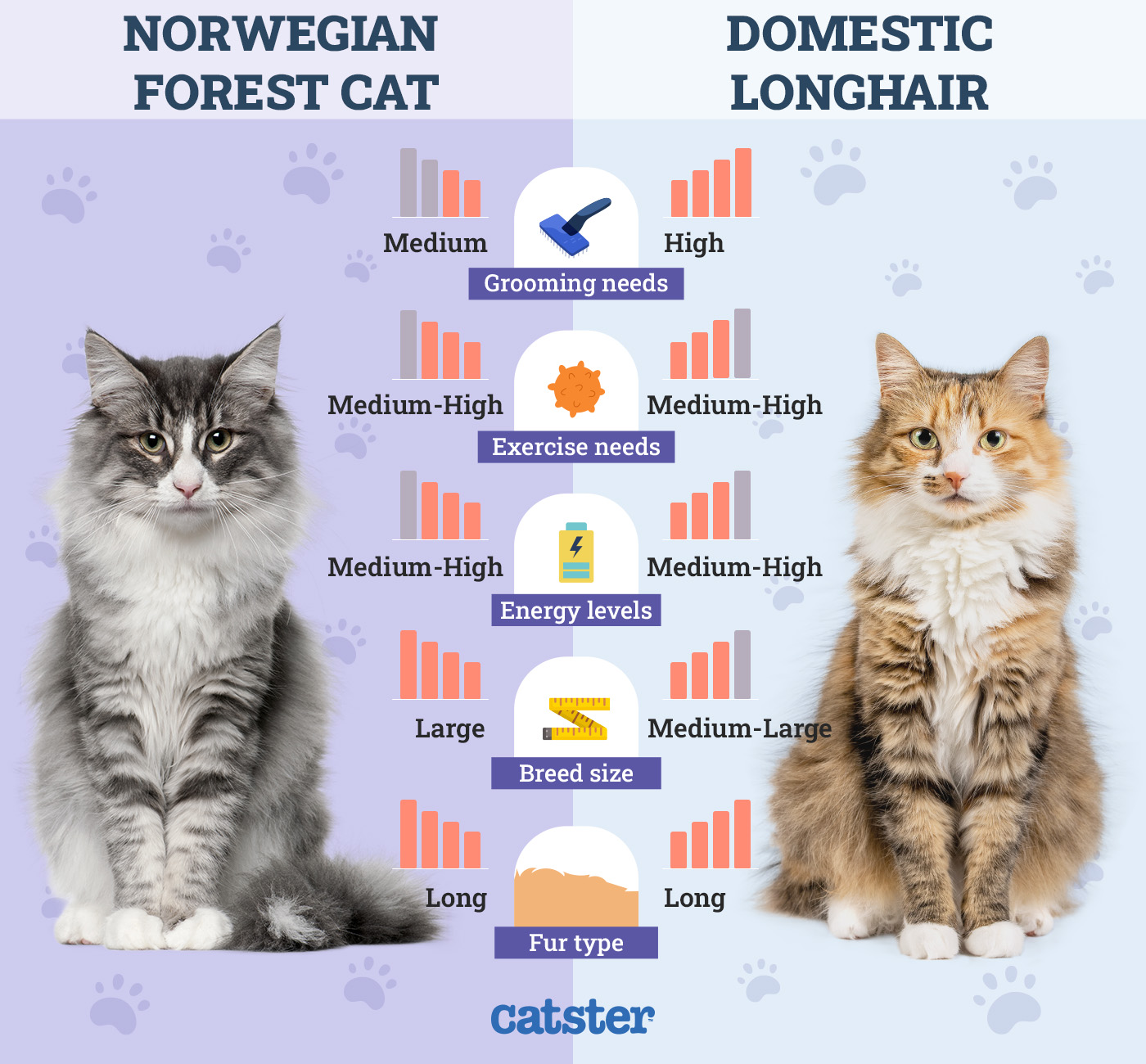
At a Glance
- Average height (adult): 9–12 inches
- Average weight (adult): 13–22 pounds
- Lifespan: 12–16 years
- Exercise: 1+ hours a day
- Grooming needs: High
- Family-friendly: Yes
- Other pet-friendly: Often
- Trainability: Intelligent, playful, can be stubborn
- Average height (adult): 8–10 inches
- Average weight (adult): 10–15 pounds
- Lifespan: 12–16 years
- Exercise: Varies
- Grooming needs: High
- Family-friendly: Varies
- Other pet-friendly: Varies
- Trainability: Varies

Norwegian Forest Cat Overview
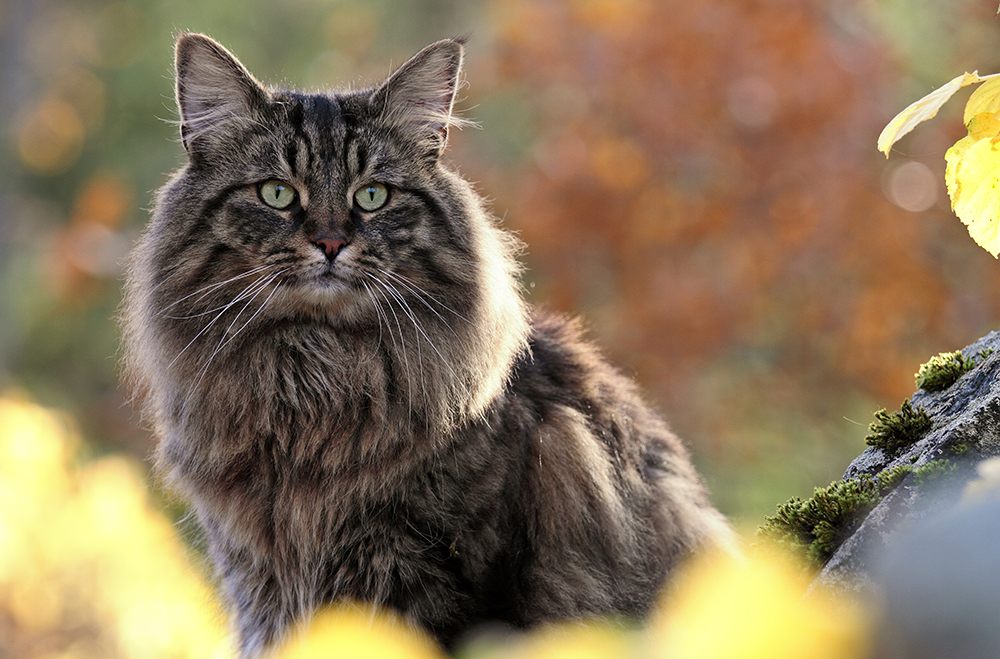
History
The Skogcatt (lit. ‘forest cat’) is the breed that would one day become recognized worldwide as the Norwegian Forest Cat. The Skogcatt hails from Scandinavia. The species was perfected in Norway, from where they got their name.
The origins of the Skogcatt are murky at best. Since long hair in cats is a recessive gene, it’s unlikely that the high prevalence of long-haired cats in Scandinavia is accidental.
There is no shortage of theories about the true origin of the Skogcatt. Some believe that the Skogcatt is related to the long-haired cats of Turkey that may have been brought back from the Byzantine Empire by Norse soldiers who served in Byzantium. Others theorize that the Skogcatt is related to the Siberian cat of Russia.
The Skogcatt was refined into the domestic cat breed that we know today before World War II, and there were plans to show the cats in the Oslo cat show. However, the war halted efforts to show the breed off.
Thankfully, the Skogcatt and its descendants survived the war and would make a splash in the world of competitive cat shows.
Personality / Character
Prospective parents of a Norwegian Forest Cat should expect their cats to be playful and energetic. Norwegian Forest Cats have boundless energy that they traditionally use to hunt and forage.
However, despite their high energy thresholds, Norwegian Forest Cats can be entirely reserved around companies with which they aren’t familiar. Pet parents shouldn’t feel upset if their cat disappears when guests are over.
Norwegian Forest Cats also aren’t lap cats. While they aren’t entirely opposed to the occasional snuggle, they aren’t known for their overly affectionate personalities.
They’re generally quiet cats that only use their voices when something is significant to them, like a missed meal. If you ignore your cat’s pleas, they may become progressively louder until you acknowledge them and fix whatever is causing them so much pain!
The Norwegian Forest Cat is also a fast learner with a sharp mind. These cats are brilliant and will undoubtedly capture your heart with their wits. These cats can be trained easily, though they can be pretty stubborn when they don’t want to do something because of their high intelligence and independent natures.
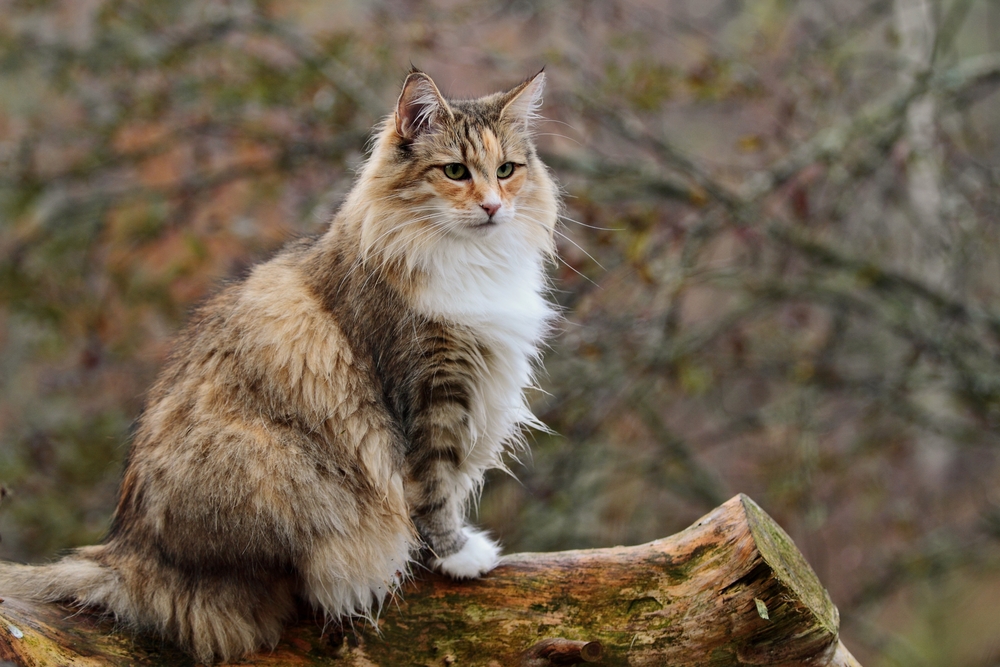
Health & Care
The most significant care factor that prospective Norwegian Forest Cat owners should consider is grooming. You’ll need to groom your cat several times a week since their natural grooming abilities won’t be enough to prevent their long, luxurious fur from getting matted.
Norwegian Forest Cats are generally healthy cats but can be predisposed to many genetic disorders. Most breeders will screen for these and tell you if your cat is likely to display them or pass them down through breeding.
Glycogen Storage Disease IV is a rare genetic condition that affects the cat’s glucose metabolism. Most kittens that inherit this disease are stillborn or die within a few hours of birth, but occasionally a kitten will survive for a few months before they start showing symptoms and die. Responsible breeders will screen for this disease and can present you with a test ensuring that your cat is not affected or carrying the genes for it.
Hypertrophic cardiomyopathy is a form of heart disease. While its prevalence hasn’t been proven in the Norwegian Forest Cat, it’s worth keeping in mind as catching it early ensures the best prognosis.
Polycystic kidney disease is a genetic disease that affects the kidneys. No DNA test for the disease is currently available for Norwegian Forest Cats, but the disease can be detected through an ultrasound. Your vet may recommend it if you have a Norwegian Forest Cat.
Retinal dysplasia is an eye defect that doesn’t worsen the cat’s vision but causes spots on the retinas.
Suitable For:
Norwegian Forest Cats best suit active pet parents who have experience owning cats. They can be troublesome for inexperienced cat parents, as these intelligent and strong-willed cats might steamroll them.

Domestic Longhair Cat Overview
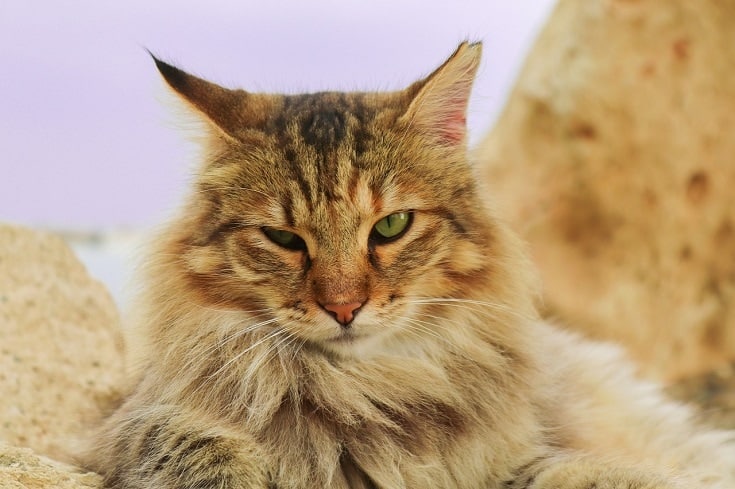
History
The Domestic Longhair Cat is not an actual cat breed. Instead, the term refers to cats of mixed, unknown, or ambiguous ancestry that display the recessive genetic trait for long hair in cats. While many Domestic Longhair Cats display distinct attributes of more prominent long-haired breeds like the Maine Coon or Norwegian Forest Cat, they don’t have enough genetic heritage to be considered part of the breed.
The only defining trait of the Domestic Longhair Cat is their long hair. This is a recessive trait, meaning cats that display the characteristic have two gene alleles for long hair.
A Punnett Square can explain the presence of genetic traits and pass them down. When a genetic allele is recessive, it won’t display physically unless the animal gets the allele from both parents. If the animal receives one recessive and one dominant allele, the dominant allele will display even though there’s only one of them.
While a cat with short hair can still carry the gene for long hair, only cats with two long hair alleles will grow long hair. Succinctly, two cats with long hair will always produce kittens that grow long hair. But two cats with short hair may have some number of kittens with long hair!
The origin of the long hair allele in domestic cats is unknown. However, the crossbreeding of cats has produced a high number of cats with long hair and no defined ancestral breed. Thus, they are placed into the Domestic Longhair Cat umbrella!
Appearance
The only defining trait of the Domestic Longhair Cat is their long hair. You may see Domestic Longhair Cats of all colors and fur patterns. Their fur will grow between 2 and 6 inches in length in adulthood.
Depending on their ancestry, they may have traits associated with other longhaired cat breeds. Cats of Persian origin may have a flat snout, while those with Ragdoll ancestry may display the pointed fur pattern of Ragdoll cats.
Domestic Longhair Cats may also have tufts of fur in their ears and between the paw pads. This is a common feature in cats that live in snowy climates.
Because these cats have mixed ancestry, they may look wildly different from their littermates. You may even see a mixed litter of short and longhaired cats.
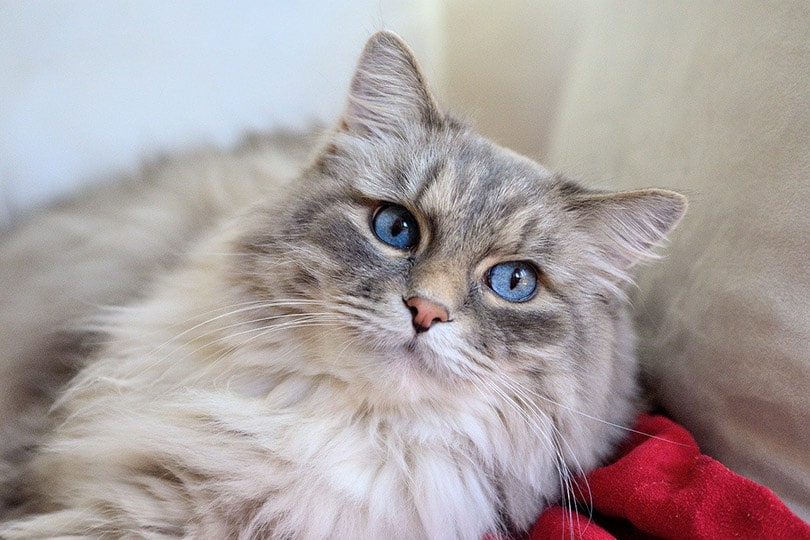
Health & Care
Like other longhaired cats, Domestic Longhair Cats need regular coat maintenance. Their natural grooming abilities won’t be enough to keep their fur from tangling and matting, especially if their hair is nearly 6 inches long.
Domestic Longhair Cats are not associated with any specific health problems because they aren’t an actual breed. Since they have no defined ancestry, your cat could inherit issues that affect whatever breeds your cat is made up of.
It’s essential to be on the lookout for common health problems that affect all cats. Issues like urinary crystals, eye infections, and other common cat health problems should be kept in the back of your mind as you do your cat’s daily care.
Suitable For:
The suitability of a Domestic Longhair Cat as a companion will vary by the cat. Since they don’t have a breed standard, no defined temperament is sought after with these cats. You’ll have to meet and greet with the cat to make sure they fit into your family’s lifestyle, and even then, they may surprise you once you get them home!

Which Breed Is Best for You?
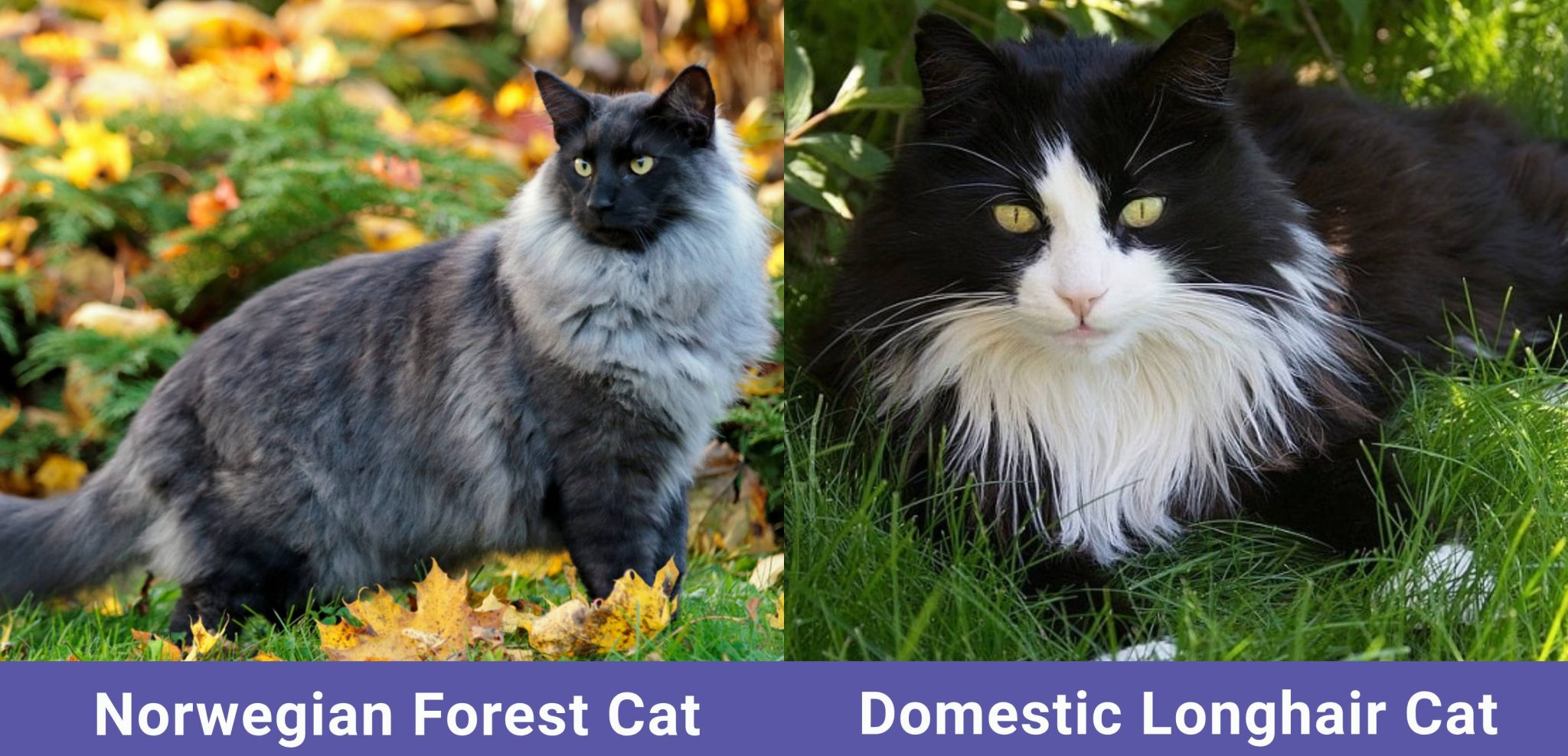
Experienced cat owners with a lot of space and energy will be able to keep up with the needs of the Norwegian Forest Cat best. However, that’s not to say that the Domestic Longhair Cat doesn’t require intensive care. Both cats require daily coat maintenance on top of the usual cat care.
Still, Domestic Longhair Cats can fit better into a family with children as it’s easier to find a more mellow cat that is less likely to defend itself. Overall, the most important thing is meeting the cat and ensuring that they will gel with your family dynamic!
Featured Image Credit: Left – Elisa Putti, Shutterstock | Right – Anna Krivitskaya, Shutterstock
